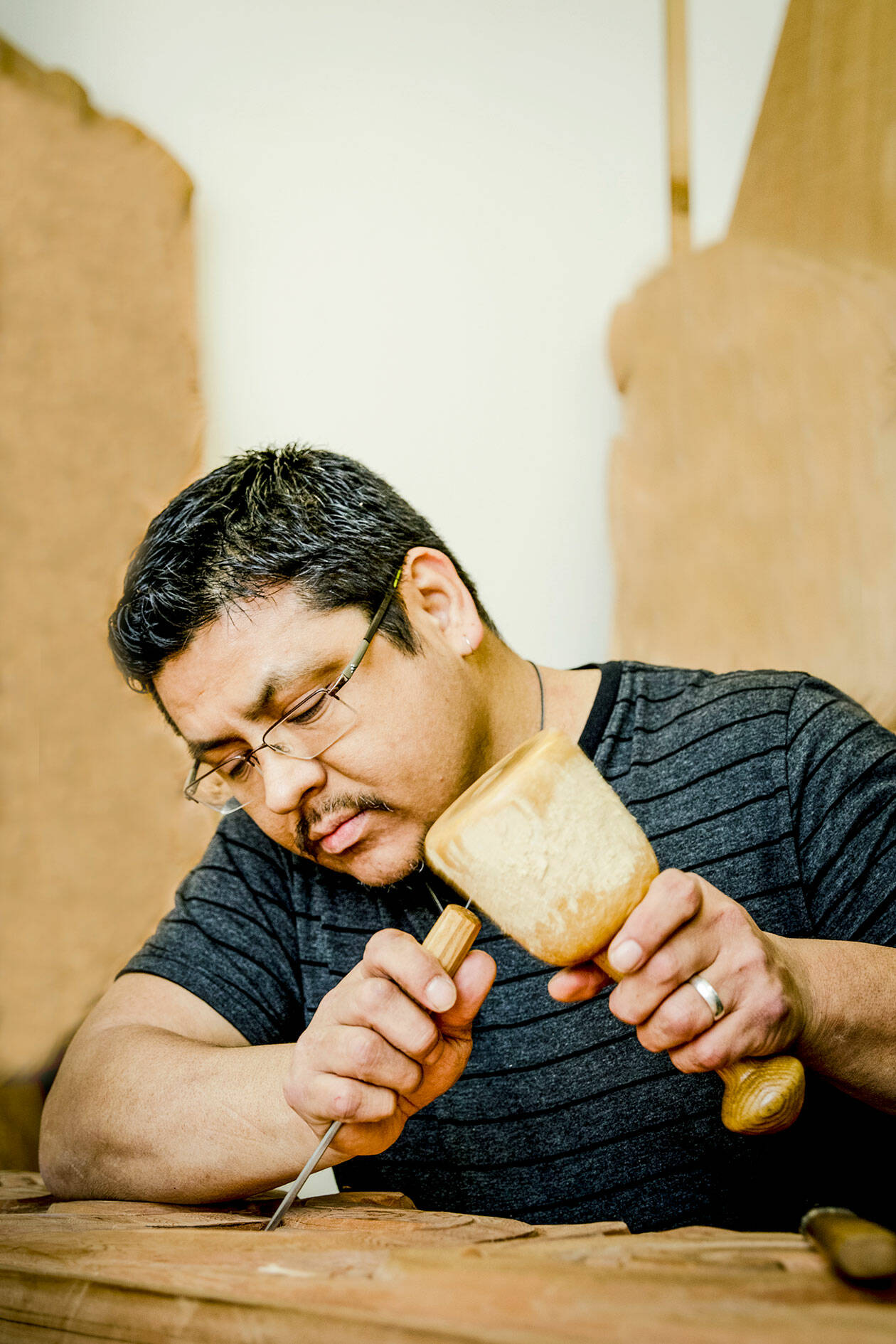NEAH BAY — The Makah Museum will celebrate its 43rd anniversary with a lecture on the Ozette archaeological site and a pop-up sale next Saturday, June 25.
“We’re very pleased that we can still inform and educate an audience after 43 years,” said Janine Ledford, executive director.
“We’re still getting people who have never been here and who were so excited that they took the opportunity to finally come.”
The museum, as well as a pop-up sale with some 20 artists and a few food vendors in the parking lot, will be open from 11 a.m. to 5 p.m., at 1880 Bayview Ave., in Neah Bay.
Alex “Swiftwater” McCarty, a Makah artist, will present a lecture, “Ozette: A Gift From the Past” at 1 p.m. in the Makah Museum’s classroom.
In addition, the board and Makah Cultural and Research Staff will honor Kirk Wachendorf, retiring interpretive specialist for the Makah Museum since it opened in 1979.
Wachendorf worked with the Ozette Archaeological Project and the Makah Museum Project and in his role as interpretive specialist “has generously shared his wealth of information and is appreciated for his dedication,” according to a press release.
The Makah Indian Reservation, including the Makah Museum, was closed to non-residents on March 16, 2020, to help minimize the spread of COVID-19 and variants.
On March 15, it was reopened to all visitors. Some businesses still require masks.
“For two years, we didn’t allow anybody from the outside, so we’re very pleased that we can open up,” Ledford said.
In addition to the museum, the Makah Cultural and Research Center also includes a language program, archives and library and a tribal historic preservation office.
“We’re always busy with language preservation and summer dance programs,” Ledford said.
Carving tradition
McCarty is the great-grandson of Hishka, who was chief of the Waatch village, one of the five villages in Neah Bay.A carver, painter, printmaker and teacher, he earned a bachelor’s in visual arts from The Evergreen State College in 2000 and a master’s in teaching from there in 2002.
After earning his master’s, he taught art at Chief Leschi Schools.
His interest in Makah carving traditions and culture was triggered in high school, when he was asked to work on a diorama of the Ozette Village with Greig W. Arnold, founding director, for the Makah Museum, according to the release.
An 11-year excavation of the Ozette archaeological site began in 1970.
Ancient longhouses had been buried in a mudslide and perfectly preserved artifacts were housed in Neah Bay as the Makah Museum’s permanent collection.Working on the project over a nine-month period, McCarty had a chance to look deeply into the past.
Preparation for making the miniature model included visiting the land forms at the site and becoming familiar with the collection of artifacts housed at the museum.
“It was Alex’s job to understand everything he could about everyday life at the village, and this helped to create his passion for history,” according to the release.
McCarty said that, in his carving, he seeks to preserve cultural traditions that he can trace back through time.
By observing the pieces from Ozette, as well as other classic West Coast carvings, he discerns “prevalent form-lines,” which characterize the Makah tradition.
He works to understand the essence of his heritage, and sees his own work as a preservation and interpretation of this older style.“Alex is driven to understand the past in his quest to develop his carving,” according to the press release. “He observes that you need to ‘get’ something before you can preserve it.”
Said McCarty: “We need to see things through multiple perspectives — the way that other people see things” to gain a deeper understanding of the world.
McCarty said he values teaching and learning from other artists, and advises people to seek out learning opportunities such as the one he had at Ozette, which he sees as an under-utilized resource.
His approach to his carving tradition could be summarized, the press release said, as “learn it with care, preserve it with beauty, and pass it on.”

